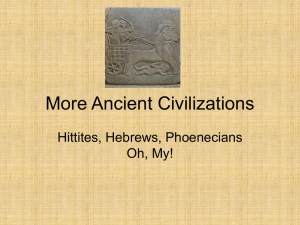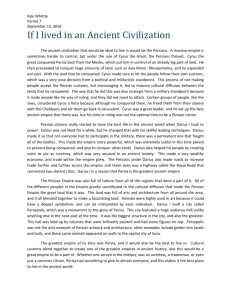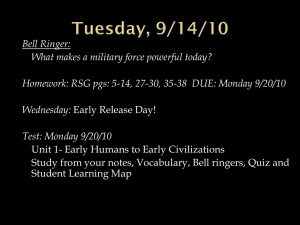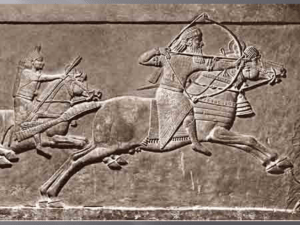File
advertisement
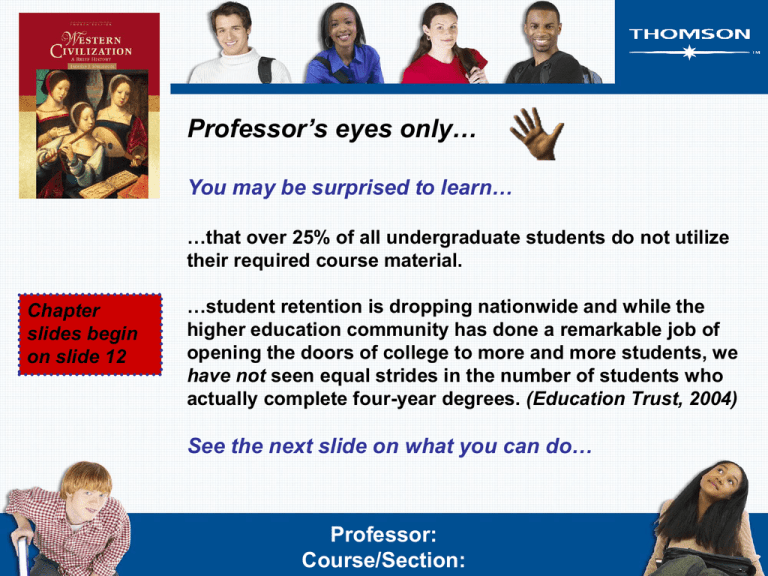
Professor’s eyes only… You may be surprised to learn… …that over 25% of all undergraduate students do not utilize their required course material. Chapter slides begin on slide 12 …student retention is dropping nationwide and while the higher education community has done a remarkable job of opening the doors of college to more and more students, we have not seen equal strides in the number of students who actually complete four-year degrees. (Education Trust, 2004) See the next slide on what you can do… Professor: Course/Section: Professor’s eyes only… What you can do… • The top factors motivating a student to use their adopted books all involve whether the material is immediately used, referred to, or assessed from in the classroom. • Please take a few minutes the first day of class to explain and demonstrate why you adopted your book and accompanying technology. • The next few slides show the book, technology products, and messaging to students that indicates they will be responsible for the content. Feel free to customize the information. Professor: Course/Section: Jackson Spielvogel Western Civilization: A Brief History, 4e This is your required course material You will need this material for: - tests and quizzes - homework and reading assignments Professor: Course/Section: Every chapter in this Fourth Edition is filled with updated and new material such as: The extensively revised and redesigned map program strengthens and clarifies the connections between geography and historical events. New material and scholarship on such topics as the Greek influence on Romans (Ch. 5); Diderot and Tahiti (Ch. 17); and World War I as a global conflict (Ch. 25) keep students in step with recent historical developments. This edition features increased attention to cultural and popular culture history, areas that especially appeal to today's culturally savvy readers. Professor: Course/Section: ThomsonNOW is an online suite of services and resources providing you the choices and tools you need to improve your grade. ThomsonNOW is your source for results NOW! • Study Notes • Interactive e-Book • Glossary • Maps • Documents Will ThomsonNOW help you get a better grade? • 87.3% of students agree using ThomsonNOW regularly will help them perform better on exams. • 83.9% of students agree that Personalized Study was a valuable study tool. • 76.3% of students agree using ThomsonNOW regularly will help them get a better grade. • 82.7% of students are likely to tell a friend about ThomsonNOW. Student Companion Website Music of Western Civilization Listen to the "hits" of Western civilization, and get a deeper sense of cultural life in the era you're studying. Available at a low cost to you, this CD contains many of the musical selections highlighted in the text and provides a broad sampling of the important musical pieces of Western civilization. Students Please Read… If your textbook doesn’t already come with the helpful study aids we’ve discussed, go to your local college bookstore. Professor: Course/Section: Chapter 2 The Ancient Near East: Peoples and Empires On the Fringes of Civilization Megalithic (Large Stone) Civilizations British Isles, Northwestern France, Scandinavia, and Mediterranean (c. 4000 – c. 1500 B.C.) Stonehenge in England (c. 2100 – c. 1900 B.C.) The Impact of the Indo-Europeans Indo-European Languages (Greek, Latin, Persian, Sanskrit and Germanic Languages) Migration in Europe, India and Asia Minor (c. 2000 B.C.) • Hittites (c. 1600 – c. 1200 B.C.) • Sea Peoples (c. 1200 B.C.) Stonehenge Neolithic Ruins at Palmavera – Sardinia Third millennium B.C.E. The Hebrews: “The Children of Israel” Hebrew Bible – Old Testament Descendants of Abraham Migration to Egypt Slaves of Pharaohs Moses leads them out of Egypt (Exodus) 12 Tribes Troubles with the Philistines Origins of United Kingdom (c. 1200 – c. 1000 B.C.) The United Kingdom Saul (c. 1020 – 1000 B.C.) David (c. 1000 – 970 B.C.) Solomon (c. 970 – 930 B.C.) Temple of Jerusalem • Arc of the Covenant Palestine in the First Millennium B.C. The Divided Kingdom Kingdom of Israel 10 Northern Tribes Capital in Samaria Kingdom of Judah 2 Southern Tribes Capital in Jerusalem Assyria Conquers Kingdom of Israel (722 B.C.) Chaldeans Conquered Kingdom of Judah (586 B.C.) Jerusalem Destroyed Babylonian Captivity Spiritual Dimensions of Israel Yahweh (Monotheism) Covenant, Law and Prophets Covenant with Yahweh Laws • 10 Commandments • Regulation of Economic, Social and Political Life of all Hebrews Prophets • Yahweh’s Voice to his People • Universalism and Social Justice • Separation between Jews and non-Jews The Neighbors of the Israelites Philistines Phoenicians Trade Colonies throughout the Mediterranean • Carthage Transmitters of Culture • Alphabet The Assyrian Empire Semitic Language Iron Weapons Ashurbanipal (669 – 626 B.C.E.) Governing the Empire Absolute Kings Well organized Empire Military Large Armies Discipline Iron Weapons Different Tactics Terror as an instrument of Warfare ©2003 Wadsworth, a division of Thomson Learning, Inc. Thomson Learning™ is a trademark used herein under license. The Assyrian and NeoBabylonian Empires Assyrian Society and Culture Imported Prisoners of War Language Religion Agriculture Trade Middlemen Hybrid Culture Guardians of Sumerian and Babylonian Culture Art • Relief Sculptures Winged bull from an Assyrian palace - Khorsabad, Eighth Century B.C. The Persian Empire The Chaldeans Nebuchadnezzar II (605 – 562 B.C.) Babylon • Hanging Gardens Fell to the Persians in 539 B.C. Three of the 120 lions along the "Processional Way" to the Ishtar Gate, the grandiose entrance to Babylon The Persians Cyrus the Great (559 – 530 B.C.) Conquered Kingdom of Lydia (c. 547 B.C.) Conquered Greek City-States Conquered Mesopotamia (539 B.C.) Cambyses (530 – 522 B.C.) Conquered Egypt Darius the Great (521 – 486) Western India Ionian Revolt in Asia Minor Invasion and Defeat in Greece (490 B.C.) ©2003 Wadsworth, a division of Thomson Learning, Inc. Thomson Learning™ is a trademark used herein under license. The Persian Empire at the Time of Darius Governing the Empire Satrapies Efficient Communications Royal Road from Sardis to Susa Persian Kings Military The Ten-Thousand Immortals Panel in glazed brick at the Ishtar Gate Persian Religion Zoroastrianism Zoroaster (born c. 660 B.C.) Monotheistic Ahuramazda Ahriman (Evil Spirit) Struggle between good and evil Last Judgment Discussion Questions How was ancient Judaism different from other ancient near-eastern religions? What impact did this have on ancient Hebrew history? What legacy did the ancient Hebrews leave to Western Civilization? Why were the Assyrians so successful in subjugating their neighbors? What role did terror play in Assyrian military tactics? How were the Persians able to conquer and maintain their large empire? How did Zoroastrianism influence religions that came later? Web Links Earth Mysteries: Stonehenge Internet Jewish History Sourcebook The Old Testament and the Ancient Near East ABZU: Internet Guide to the Ancient Near East Ancient Mesopotamia and the Levant Hittite Homepage Cyrus the Great
